
For anyone who has visited the region, the incredible roar of the red howler monkey is a classic wake up call. Photo by: Declan Burley.
In August, three young filmmakers will go on the expedition of a lifetime. Tristan Thompson, Declan Burley, and Chris Butler plan to spend six months filming in one of the most remote, most spectacular, and most endangered ecosystems on the planet: the Las Piedras River system in the Peruvian Amazon. This unprotected swathe of Amazon jungle contains massive anacondas, prowling jaguars, a weird floating forest and even uncontacted indigenous people.
The crew of Uncharted Amazon, which has just set up a Kickstarter campaign to help fund the film, plans to not only focus on the amazing wildlife of the region, but the people too. Setting their documentary a part from other “nature films,” they will follow loggers, hunters, conservationists, scientists, and indigenous people to capture the real story behind this embattled forest-scape. The filmmakers hope to leverage the film, which will be made in both English and Spanish, to advance conservation in the region.
Thompson says if they aren’t able to hit their Kickstarter target the team will still go, but it won’t be possible to make the full feature. Raising more money than their target would mean the three filmmakers will be able to do significantly more, including perhaps flyovers, far extending the time they are able to spend filming, canopy filming, and camera trapping. ”
Tristan Thompson (interview below) is a trained biologist who last year released An Untamed Wilderness, a half-hour long documentary about the Amazon. Declan Burley is a filmmaker who has done documentaries on artists and wildlife, as well as wildlife artists. He is also a photographer. Chris Butler is also a filmmaker who has worked with the BBC and the Community Channel, including a recent documentary on models with disabilities.
AN INTERVIEW WITH TRISTAN THOMPSON
Mongabay: What drew you to make a documentary about the Las Piedras region of Peru?
Tristan Thompson: The Las Piedras River runs through one of the world’s great biodiversity hotspots, along with the Bahuaja Sonene National Park and Tambopata National Reserve of southeastern Peru. These are prime places for biodiversity records to be shattered and many have been. E.O. Wilson found 43 species of ant on a single tree, which is more species than exist in the entirety of the British isles! There are 601 birds, 1,237 butterflies and the lists keep growing; it’s an unbelievable part of the world. But there is a big difference between the rainforest surrounding the Las Piedras River and the Bahuaja Sonene National Park. Aside from a couple of small conservation concessions, most of the trees in Las Piedras are up for grabs. Logging and mining are rife in the area and a quick scan on Google Earth reveals new pockets of forest being opened up all the time. Roads spread like tendrils from the recently built Inter-Oceanic Highway, feeling around the forest like some colossal monster looming over this tropical paradise, about to devour it entirely.
So, what drew me in was the thought that in the worst-case scenario, Uncharted Amazon could be like a last record of life in this place before it changes forever. But this seed would not have been planted were it not for people like Paul Rosolie and Juan Julio Durand and organizations like the Amazon Rainforest Cooperative Alliance who have been working tirelessly to increase the profile of the area and to pioneer the first conservation strategies to protect it.
Mongabay: What are some of the species you’re most excited to film?
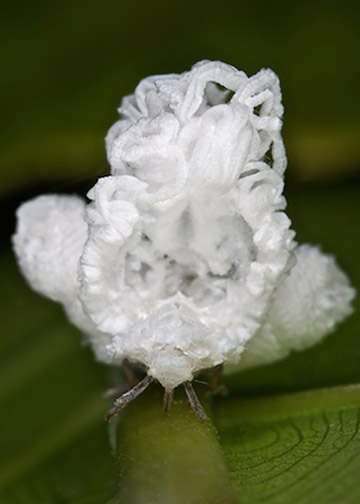 As a nymph, this tree hopper exudes a white waxy substance, the purpose of which remains a mystery. Photo by: Robert Oelman. |
Tristan Thompson: Where to begin! As we’ve been researching species for the film, we’ve become drawn ever further into the fascinating world of the little things living in the rainforest. The purpose of the intricate structures that basket-weaving moths cocoon themselves within have long eluded scientists. Tree-hoppers are fascinating too, I think you would be hard pressed to find a greater diversity of strange forms within any group than the tree-hopper family (just Google tree-hoppers). I’ve even watched some of these little critters select tiny pieces of their favored debris from the forest and coat themselves with it as camouflage. It’s amazing to see, you think they are fluff balls or moss but you touch them and they sprout legs and come alive.
But big animals are important too and we’ll certainly be scouting out for a jaguar. We’ve filmed them on river beaches but it would be incredible to catch one in the forest so we will spend some long night’s waiting at mammal clay licks, where the animals dig to eat the soil. These are really important places for rainforest mammals as they provide a source of salt and are also thought to help neutralize toxic compounds in unripe fruit. As a result, it is possible to observe many different species passing through them but you have to be prepared to wait. Clay licks also occur along rivers; and the Madre de Dios region is famous for the huge flocks of macaws that gather in these areas to feed on the clay.
Mongabay: What do you expect filming conditions to be like in this rugged and remote region?
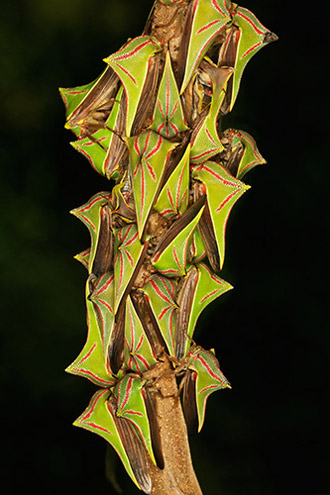 These thorn tree hoppers, aptly named, disguise themselves as thorns. Photo by: Robert Oelman. |
Tristan Thompson: We are on a tight budget so for the most part they will be very basic, we envisage that we will spend a large proportion of our time in tents/hammocks to cut accommodation costs, this is one of the things that will allow us to make the film on such a tiny budget. But if we meet our stretch goals for the crowd-funding campaign, then perhaps we can get ourselves some luxuries like a bathroom or a bed. Filming conditions in the rainforest are hard without doubt; it is of course extremely hot and humid, lenses will fog, mosquitoes will bite, sandflies will bite, bees will sting, but in this place of extremes, the upsides far outweigh the downsides. Witnessing the beauty of life in the place where it exists at its richest, makes it all worthwhile.
Mongabay: You are planning to go beyond a normal nature documentary and also film loggers and indigenous people. How do you see this as a part of the story of the Las Piedras?
Tristan Thompson: Everyone loves straight up, classic, nature documentaries and that includes myself. But this is precisely the reason why I think we need to see more of the people that are living and working in these places. By understanding why it is that the forest is removed, how it can affect people down the line and especially in this case, how value can be added to the forest in ways which preserve its integrity, we can begin to start thinking about not only appreciating these places, but preserving them for the future.
The people that live and work in the rainforest are seriously tough and the level of knowledge and ingenuity they use to get by there, is startling. It is important to realize that the wilderness areas often depicted in nature documentaries do not exist in isolated bubbles, but there are people there too, who are affected by them and in turn affect them. Ultimately, if these last wilderness areas are logged to the ground, then where will we film the nature documentaries?
Mongabay: How do you envision your documentary could be used to increase conservation of this region?

Jaguars are still a common sight along the banks of the river. Photo by: Declan Burley.
Tristan Thompson: There are two ways in which I think this can happen. Firstly, if lots of people outside of Peru watch the film, then they will know about the area and see how awesome it is. If at some point during or after watching the film they think “perhaps I would like to go and volunteer, or perhaps go on a holiday in the rainforest, I want to see those things for real” then I want Las Piedras to be the first place they think of. Tourism and volunteering have been a massively successful in neighboring areas as methods of generating income for local people without clear-cutting the forest.
Secondly, the concept of conservation in Peru is newer than it is in Europe and the States. Peru is very lucky because it still has massive expanses of wilderness like Las Piedras, which form part of a small and decreasing number of places in the world that are truly wild. Helping to introduce the concept of conservation in these places now, could be the great turning point, which sees them preserved. So we will certainly work to see the film in Spanish and distributed within Peru.
Mongabay: How can people help? What will donations allow you to do that you wouldn’t otherwise be able to?

The Las Piedras river meanders through lowland rainforest for 621 kilometers before its waters mix with the Madre de Dios. Photo by: Declan Burley.
Tristan Thompson: The unfortunate reality of films is that they cost money. We really need the support of like-minded people to make it happen, simply because without you, this project can’t go ahead. The short time limit we have to reach our goal is very exciting but also nerve-wracking. To make it happen and support the campaign all you have to do is click on the following link and you have the option to back the film in return for different ‘rewards’ like DVD copies of the film, photographic prints or Peruvian friendship bracelets. If we don’t reach the goal then the money is returned by Kickstarter. Its all or nothing and we only have a couple of weeks to make it.
Mongabay: When can people expect the film?
Tristan Thompson: If we reach our funding goal on Kickstarter then our backers can expect to see their copies of the film in July 2015, which allows plenty of time for us to organize post-production upon return, after the six months we intend to spend filming in the rainforest. It’s a bit of a wait, but it will be worth it.

Long before the iPhone, long before the car, even before the discovery of the solar system, trees like this one were seedlings. Photo by: Declan Burley.
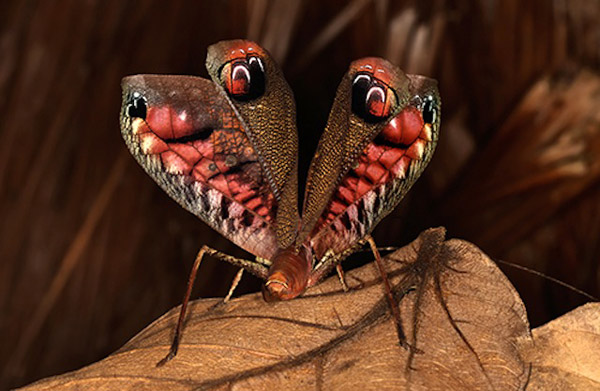
The diversity of insect life in the area is truly amazing. When this katydid’s wings are folded it mimic’s a decaying leaf, but when a something comes too close, it flashes the eye-spots on the underside of its wings, mimicking a predator with the aim of scaring it off. Photo by: Robert Oelman.
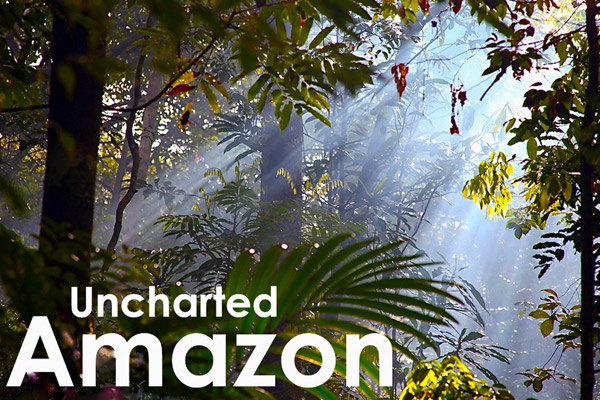
Production image. Photo by: Jon Rawlinson.
Related articles
Mother of God: meet the 26 year old Indiana Jones of the Amazon, Paul Rosolie

(03/17/2014) Not yet 30, Paul Rosolie has already lived a life that most would only dare dream of—or have nightmares over, depending on one’s constitution. With the Western Amazon as his panorama, Rosolie has faced off jaguars, wrestled anacondas, explored a floating forest, mentored with indigenous people, been stricken by tropical disease, traveled with poachers, and hand-reared a baby anteater. It’s no wonder that at the ripe age of 26, Rosolie was already written a memoir: Mother of God.
53 indigenous activists on trial for police-protester massacre in Peru

(05/15/2014) In the summer of 2009, on a highway in Peru known as Devil’s Curve: everything went wrong. For months, indigenous groups had protested new laws by then President Alan Garcia opening up the Amazon to deregulated logging, fossil fuels, and other extractive industries as a part of free trade agreements with the U.S.
New report reveals human rights abuses by corporations, governments in the Amazon
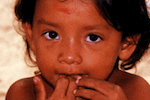
(05/14/2014) Regnskogfondet (the Rainforest Foundation of Norway) recently released a 52-page report that gives an in-depth account of the conflicts activists and indigenous peoples (IPs) are having with corporations and governmental agencies. It relays a situation that does not look good.
Legal logging concessions drive illegal logging in Peru, threatening forests and indigenous people

(04/17/2014) Nearly 70 percent of officially inspected logging concessions in Peru have had their permits canceled or are under investigation for major breaches of forestry laws, finds a new study published in the journal Scientific Reports. Worryingly, the research also concludes that forestry permits are being widely used to launder timber illegally logged from outside concession areas.
Saving rainforests by buying them

(04/04/2014) For more than twenty five years, an international non-profit known as the World Land Trust has been working to protect tropical forests through land purchase and partnerships with local groups. Last year, the U.S. arm of the group decided to rebrand itself as the Rainforest Trust to better convey its core mission to the outside world. Since then, the Rainforest Trust has launched its most ambitious project yet: conserving 5.9 million acres of tropical forest in Peru.
Several Amazonian tree frog species discovered, where only two existed before

(03/18/2014) We have always been intrigued by the Amazon rainforest with its abundant species richness and untraversed expanses. Despite our extended study of its wildlife, new species such as the olinguito (Bassaricyon neblina), a bear-like carnivore hiding out in the Ecuadorian rainforest, are being identified as recently as last year. In fact, the advent of efficient DNA sequencing and genomic analysis has revolutionized how we think about species diversity. Today, scientists can examine known diversity in a different way, revealing multiple ‘cryptic’ species that have evaded discovery by being mistakenly classified as a single species based on external appearance alone.